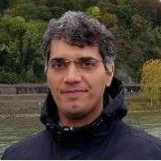New Advances in Machine Learning for Soil Properties Prediction and Mapping
A special issue of Remote Sensing (ISSN 2072-4292). This special issue belongs to the section "Remote Sensing in Geology, Geomorphology and Hydrology".
Deadline for manuscript submissions: closed (30 June 2024) | Viewed by 9204
Special Issue Editors
Interests: digital soil mapping; machine learning; pedology; remote sensing
Special Issues, Collections and Topics in MDPI journals
Interests: soil science; soil formation; soil health; digital soil mapping; machine learning
Special Issues, Collections and Topics in MDPI journals
Interests: change detection; hyperspectral imaging; soil salinity; pattern recognition; satellite oceanography; optical remote sensing; SAR; InSAR; thermal remote sensing; image matching; anomaly detection
Special Issues, Collections and Topics in MDPI journals
Special Issue Information
Dear Colleagues,
The measurement and digital global mapping of soil properties (e.g., soil moisture, pH, salinity, and organic carbon) are important tools for our understanding of environmental functions, soil–crop interactions, and ecosystem services. There are currently a series of open-access remote sensing data platforms, including Landsat, MODIS, and Sentinel satellites, which act as effective tools for studying and mapping soils. In terms of mining and exploiting remote sensing data, machine learning algorithms, including artificial intelligence (AI), are also providing new methods for monitoring soil properties and global soil mapping.
Machine learning, as an intelligent technique for describing the complex relationships between soil properties and environmental covariates, can perform data preprocessing, learn from existing Earth observation data, and mine hidden and unknown patterns from large databases, thus providing some accurate predictions in spatial and temporal dimensions. However, with the continuous mutation of and increase in environmental information, how to use remote sensing and machine learning algorithms to accurately predict the dynamic changes in global gridded soil information has become one of the current challenges.
It is our pleasure to announce the launch of a new Special Issue in Remote Sensing, where we especially welcome research articles covering but not limited to the following topics:
- Computational systems and algorithms for deriving global gridded soil datasets using remote sensing methods;
- Fusion of different combinations of remote and proximal remote sensing for global soil mapping;
- Cloud computing and big data analysis for soil properties, soil pollution, and risk assessment;
- Uncertainty assessment of soil information based on remote sensing techniques;
- Proximal soil sensing tools to measure and map moisture, organic carbon, heavy metal molecules, and high salt concentrations in soil.
Dr. Ruhollah Taghizadeh-Mehrjardi
Dr. Mojtaba Zeraatpisheh
Dr. Mahdi Hasanlou
Guest Editors
Manuscript Submission Information
Manuscripts should be submitted online at www.mdpi.com by registering and logging in to this website. Once you are registered, click here to go to the submission form. Manuscripts can be submitted until the deadline. All submissions that pass pre-check are peer-reviewed. Accepted papers will be published continuously in the journal (as soon as accepted) and will be listed together on the special issue website. Research articles, review articles as well as short communications are invited. For planned papers, a title and short abstract (about 100 words) can be sent to the Editorial Office for announcement on this website.
Submitted manuscripts should not have been published previously, nor be under consideration for publication elsewhere (except conference proceedings papers). All manuscripts are thoroughly refereed through a single-blind peer-review process. A guide for authors and other relevant information for submission of manuscripts is available on the Instructions for Authors page. Remote Sensing is an international peer-reviewed open access semimonthly journal published by MDPI.
Please visit the Instructions for Authors page before submitting a manuscript. The Article Processing Charge (APC) for publication in this open access journal is 2700 CHF (Swiss Francs). Submitted papers should be well formatted and use good English. Authors may use MDPI's English editing service prior to publication or during author revisions.
Keywords
- soil properties
- machine learning
- digital soil mapping
- big data analysis
- artificial intelligence
- remote sensing
- uncertainty assessment
- environmental soil formation drivers
Benefits of Publishing in a Special Issue
- Ease of navigation: Grouping papers by topic helps scholars navigate broad scope journals more efficiently.
- Greater discoverability: Special Issues support the reach and impact of scientific research. Articles in Special Issues are more discoverable and cited more frequently.
- Expansion of research network: Special Issues facilitate connections among authors, fostering scientific collaborations.
- External promotion: Articles in Special Issues are often promoted through the journal's social media, increasing their visibility.
- Reprint: MDPI Books provides the opportunity to republish successful Special Issues in book format, both online and in print.
Further information on MDPI's Special Issue policies can be found here.







